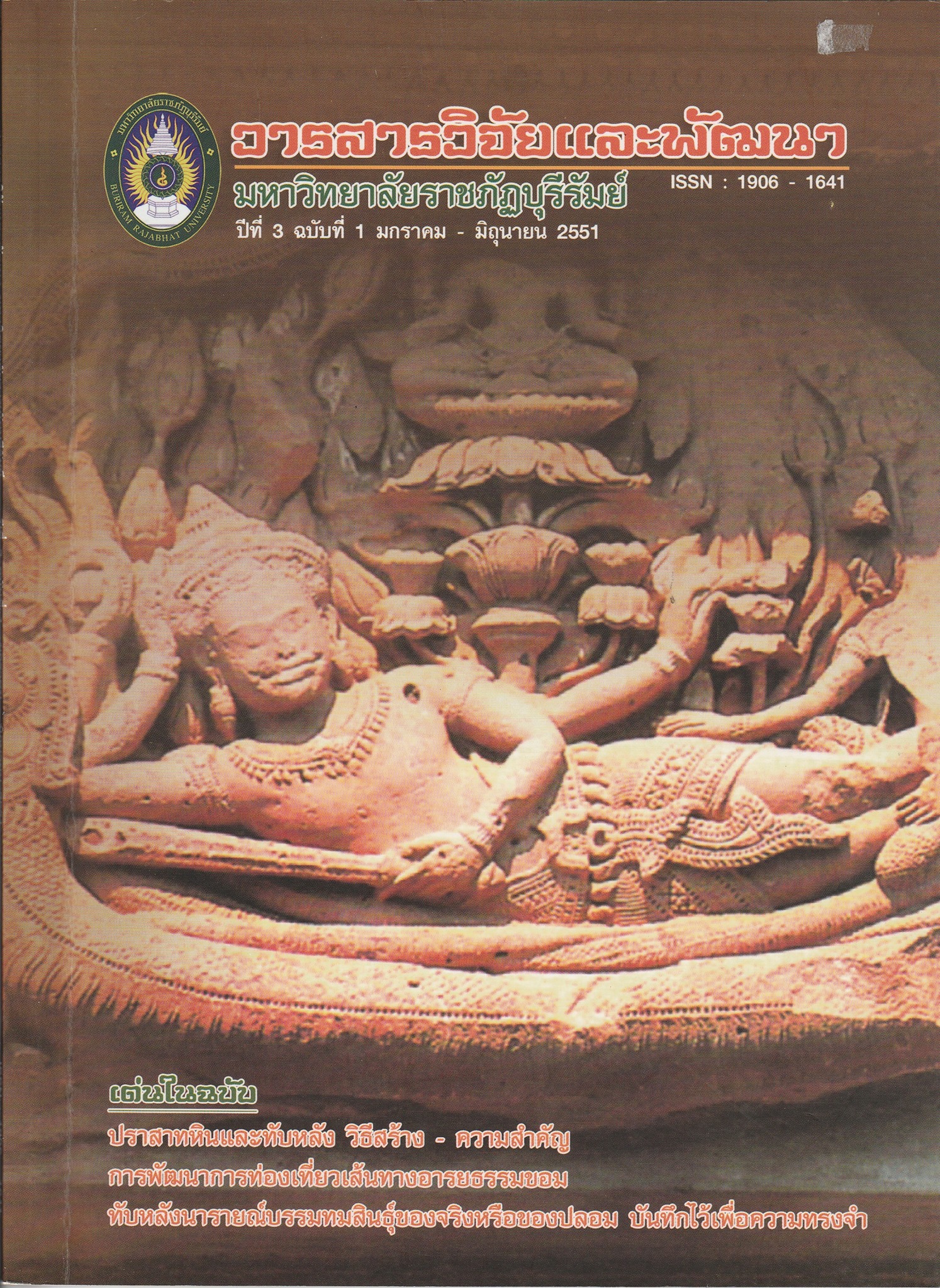การศึกษาศักยภาพเศรษฐกิจ ภายในจังหวัดบุรีรัมย์ กรณีศึกษาภาคอุตสาหกรรมและเกษตร
Main Article Content
Abstract
The objectives of this research were - to study 1) the general situation, economic problems and Threats in Buriram Province, 2) the economic capacity about the industry and agriculture sector, and 3) the knowledge of economic capacity about the strange and stability in Buriram. The results were found that in first objective, all area of Buriram is 718,235 square meters or 437,807 Rai, 21 districts, 2 sub-districts, 189 Tambons, 2,460 villages, 312,898 households, one province's administration organization, 184 districts administration organization and 24 municipalities. In 2006, there were the populations about 1,531,430 persons, male of 764,450, female of 766,973. The important economic problems and threats in Buriram were the debt, poverty, lessincome, the problem of production, unemployment, the non-equivalent income distribution, the landless for planting and residing, the less-education of business, the inflation and tight money, the waiting of season, the problem of foreign business. In an agricultural economic capacity, all households were 349,934 households, 247,847 agriculturists. The important vegetables were 1) Rice, 2) Cassava, 3) Sugarcanes, 4) mulberry; the important animals were the Ox, Chicken and Pig. In the industrial economic capacity, in 2007 there were 1,583 manufactories, it were mostly the Rice Mill, Sugarcane factory, Cloth factory and Shoo factory. In the economic capacity, it was found that the agriculture could be developed as the rice, cassava, Rubber, livestock and aquatic .animal, organic farm and organic agriculture. In the industry efficiency, these could be developed as the Rice Mill, the cloth factory in the village, Stone Mill, Shop for repairing Motor. If there was the support and addition of different policy, it would be developed in the goods of agriculture and industry.
Article Details
เนื่อหาและข้อมูลในบทความ เป็นความรับผิดชอบของผุ้แต่ง
บทความในวารสารเป็นลิขสิทธิ์ของวารสารวิจัยและพัฒนา มหาวิทยาลัยราชภัฏบุรีรัมย์


